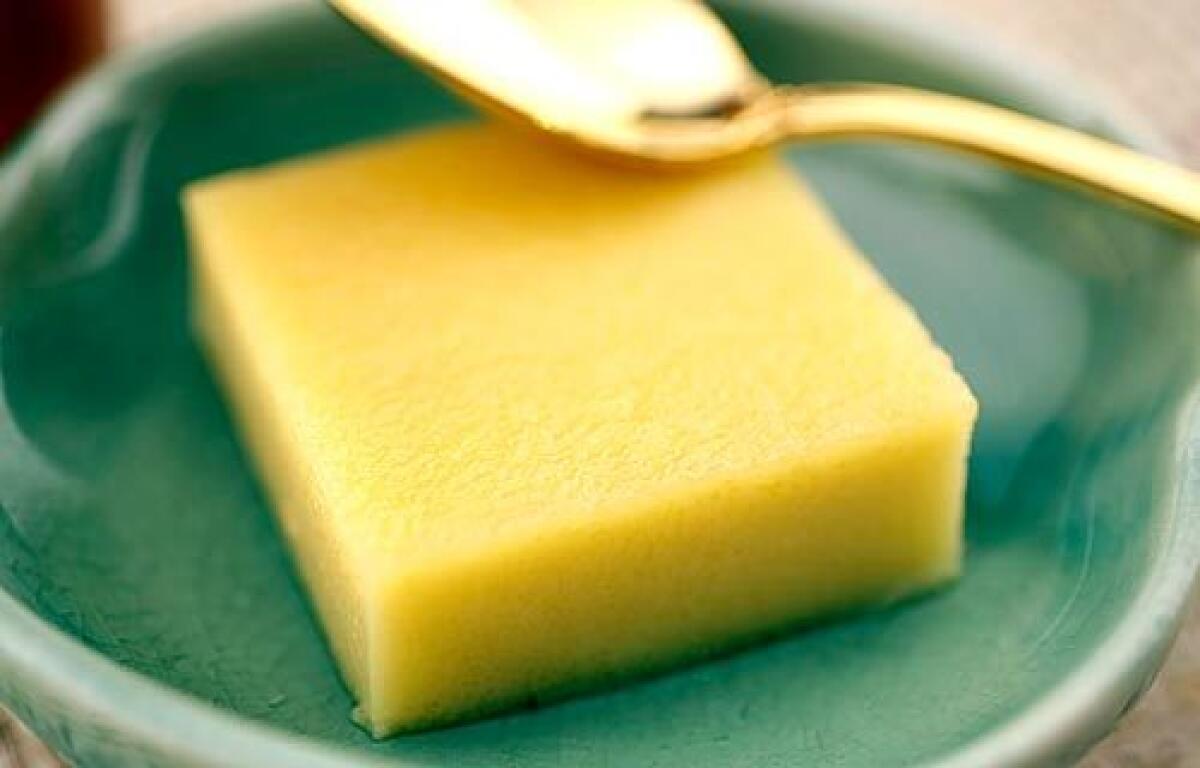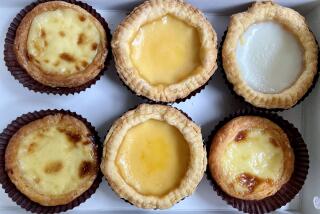Recipe: Thai coconut-egg custard (sangkaya)

Total time: 35 minutes, plus cooling time for the cream
Servings: 6 to 8
Note: Adapted from “It Rains Fishes,” by San Diego author and cooking teacher Kasma Loha-Unchit. One traditional way to serve this is cooked in the center of a kabocha squash. Coconut cream, palm sugar and coconut sugar can be found at Thai and most Asian markets. Coconut cream will also rise to the top of good-quality chilled coconut milk; skim the thick cream from the top and reserve the milk for another use. Bai dteuy can be found at Thai markets.
1 cup thick coconut cream
1 cup palm sugar or coconut sugar
5 eggs
1/4 teaspoon bai dteuy (pandanus leaf essence), optional
1. In a medium saucepan, heat the coconut cream and sugar over medium heat just long enough to dissolve the sugar and blend with the cream, stirring frequently. Remove from heat and pour the mixture into a medium bowl to cool to room temperature.
2. In a large bowl, whisk the eggs until blended. Whisk in the essence if using, then whisk in the cooled coconut cream mixture until thoroughly incorporated.
3. Strain the mixture through a dampened muslin cloth or fine wire mesh strainer into an oiled 8-inch square baking dish.
4. Place the dish in an Asian steamer set over simmering water and cover. Alternatively, place the custard on a rack set over simmering water in a large roasting pan and cover. Steam over medium-high heat until the custard is set (a knife inserted near the center should come out clean), about 20 minutes. Remove from heat.
5. Serve custard in serving bowls or cut into slices, 3 inches by about one-half inch thick, on top of sticky rice with coconut milk (see accompanying recipe).
Each of 8 servings: 272 calories; 4 grams protein; 44 grams carbohydrates; 0 fiber; 9 grams fat; 7 grams saturated fat; 132 mg. cholesterol; 67 mg. sodium.
More to Read
Eat your way across L.A.
Get our weekly Tasting Notes newsletter for reviews, news and more.
You may occasionally receive promotional content from the Los Angeles Times.






